Swami Haridas Music Festival in Vrindavan
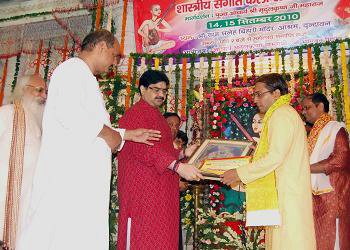
Braj Vrindavan Heritage Alliance
http://bvhalliance.blogspot.com
www.sudhir pandey.tabla masters.htm
Swami Haridas was a spiritual poet and classical musician. Credited with a large body of devotional compositions, especially in the Dhrupad style, he is also the founder of the Haridasi school of mysticism, still found today in North India. His work influenced both the classical music and the Bhakti movements of North India, especially those devoted to Krishna’s consort Radha. He is accounted a follower of the Nimbarka Sampradaya, the major Vaisnava tradition of exclusive devotion to Radha-Krishna. He was the disciple of Purandara Dasa and the teacher of Tansen. Read More: > HERE <
Vrindavan (Hindi: वृन्दावन)( pronunciation (help·info)) (alternately spelled Vrindaban, Brindavan, Brindavana, or Brundavan) also known as Vraj (as it lies in the Braj region) is a town in the Mathura district of Uttar Pradesh, India. It is the site of an ancient forest which is the region where Lord Krishna spent his childhood days. The town is about 15 km away from Mathura, the city of Lord Krishna’s birthplace, near the Agra-Delhi highway. The town hosts hundreds of temples dedicated to the worship of Radha and Krishna and is considered sacred by a number of religious traditions such as Gaudiya Vaishnavism, Vaishnavism, and Hinduism in general. It is nicknamed „City of Widows“ after the large population of abandoned widows who seek refuge here. Read More: > HERE <
Swami Haridas was a multi faceted personality. Primarily we know him as the saint who realized God through the route of nad brahma sadhna i.e. praying continuously in music. He not only composed a large number of poems (pad) but also started and perfected newer raags in classical music to sing the same. He realized God in the form of Shri Bankey Bihari, started the tradition of and initiated his disciples into rasopasna bhakti. He is also known as Adya Acharya of Raas Leela tradition. His birthday, which falls on Radha Ashtami day, is celebrated as a very special day in the temple, in Nidhivan and in Vrindavan.
Nidhivan as well as temple, both are decorated tastefully with flowers, flags and hangings. We have regular darshan at both places in the morning. In afternoon, around 4:30 PM, Raas Leela is staged in the courtyard of the temple. It is worthwhile to note, it is only once in the whole year on this day, that Raas Leela is performed in the temple.
Swami Haridas Sangit Samaroh Festival – Eminent Musician His Holiness Swami D. R. Parvatikar Veena Maharaj wanted to establish a yearly music Festival a international level at Vrindaban India in glorious memory of great musician Saint Shri Swami Haridas (Guru of Tansen ). Several music devotees and Artist appreciated this thinking of Veena Maharaj and Shri Swami Haridas Seva Samiti established by him in 1964 and every year Swami Haridas Sangit Samaroh started on Bihar Panchami, the appearance day of Shri Thakur Bankey Behariji.
After some period Shri Gopal Goswami taken up to organize the festival in Vrindaban, Delhi and Mumbai on the occasion of Radha-Astthami and managed many years. Gopal Goswami also organized the festival for few years. Prior to that Saint Shri Paad Baba of Vrindaban organized this music festival. This of Radha-Asthmi Atul Krshna Goswami organized it three days in Saneh Bihari Temple in Vrindaban.
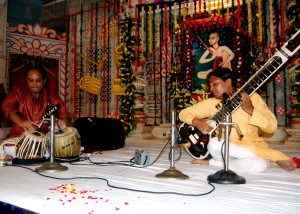
Swami Haridas Sangit Samaroh in the stage of famous Senior Artists of music field. Pt. Ravi Shankar, Ali Akbar, Bhim Sen Joshi, Bismillah Khan, Vilayat Khan, Gopikrishna, Sitara Devi, Kishori Amonkar, Ramchaturmalik and all of maximum famous artists have already been participated ith devotion to Swami Haridas ji. In view of the chain, this year also famous artists been invited.
Maestro Dr. Acharya Trigunateet Jaimini presented excellent performance on Sitar with beautiful accompany of Tabla player Sudhir Pandey from Delhi India who has quality experience of accompany with great masters Nikhil Banerji, Jasraj, Vilayat Khan & other Indian classical masters. Dr. Jaimini (Disciple of Swami D. R. Parvatikar) always get remarkable appreciations from the intellectual audience. His artistic talency holding over since two decades.
Dr. Jaimini & Sudhir Pandey also awarded Shastriya Kala Ratna Award in Swami Haridas Sangit Samaroh Festival. Coordinator Anup Sharma & Devendra Sharma told that He Specially invited Sudhir Pandey Tabla Player from Delhi to accompany with Dr. Jaimini for best presentation to the audience was thankful to Acharya Jaimini for his valuable participation in the programme.
Article by Ratnambara Sharma
writer Art & Culture
email – artcolour@rediffmail.com
mob. 91 9410226334
- Meet UNESCO World Heritage, friends, fans at fb <
- Meet Support UN Resolution on the Right to Water <
- Meet International Year of Biodiversity, friends, herbal fans at fb <
- Meet International Rivers, friends fans at fb <
- Meet IAIA – International Association for Impact Assessment at fb <
- Even like Yamuna the largest water distribution of Ganga, also Xingu River for Amazonas the consequences about non enviromental assessment creating negativ enviromental impacts, loss of biodiversity and cultural heritage. Scientists round the globe sounding Alarm about the freshwater qualities and Rivers.
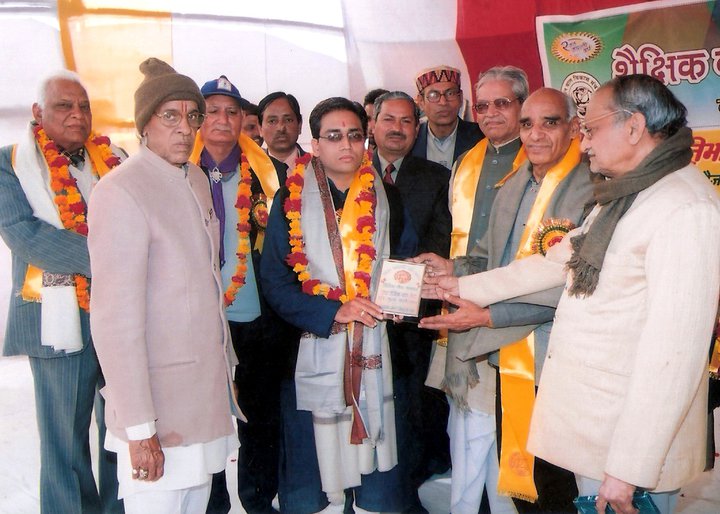
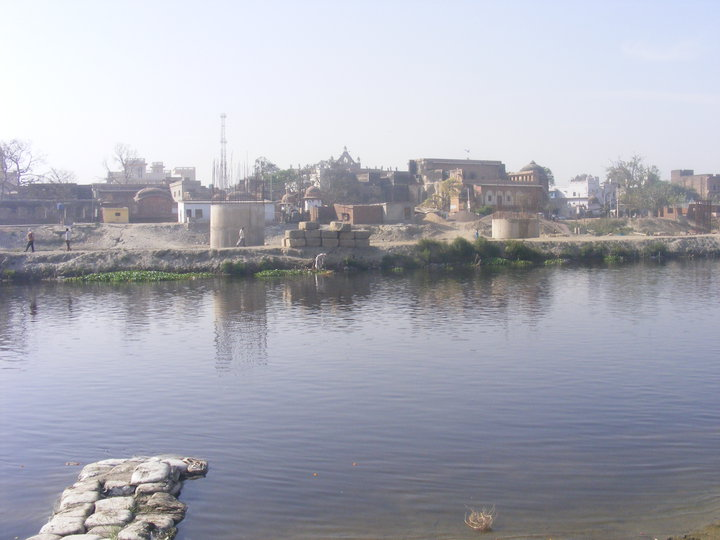
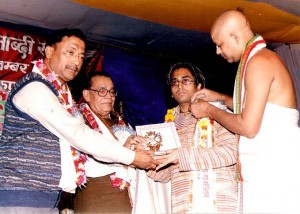

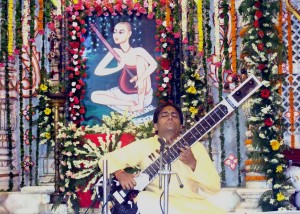

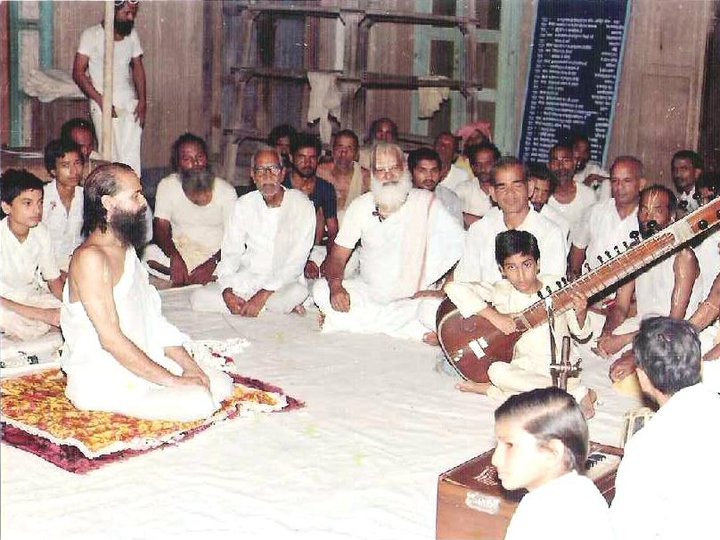
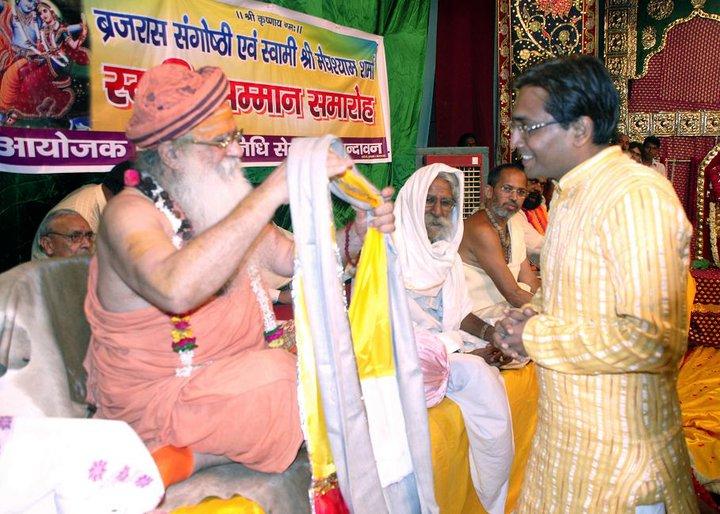
Never seen dimension of flood impact on Ganga River
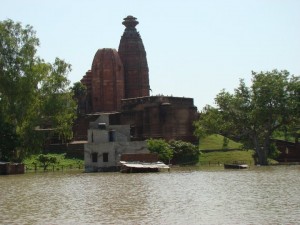
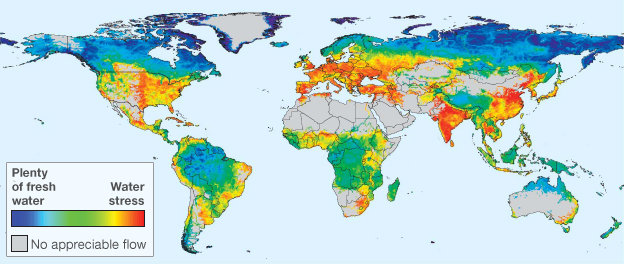
Water map shows billions at risk of ‚water insecurity‘ – About 80% of the world’s population lives in areas where the fresh water supply is not secure, according to a new global analysis.Researchers compiled a composite index of „water threats“ that includes issues such as scarcity and pollution.
The most severe threat category encompasses 3.4 billion people.Writing in the journal Nature, they say that in western countries, conserving water for people through reservoirs and dams works for people, but not nature.They urge developing countries not to follow the same path.
http://www.bbc.co.uk/news/science-environment-11435522
http://en.wikipedia.org/wiki/Water http://en.wikipedia.org/wiki/Drinking_water
http://www.iaia.org/ Conference Theme – What are the consequences to ecosystems, cultural heritage and human well-being -in the short and long run- of decisions taken by infrastructure developers, industry executives and managers, financial agents and business leaders?
Today we know much more about the environmental and social effects related to decisions taken in these sectors and their implications to humankind, especially the… poorest and most defenseless people.Impact assessment comprises a set of tools that strengthen the sense of responsibility in business and investments and in the design and execution of policies, plans, programs and projects.
Responsible development means to assess in an integral way the impacts on the environment and on communities, human health, and well-being. Infrastructure and industrial projects as well as business undertakings (in the financial and retail sectors, for instance) should be developed under this responsible point of view, from the early conceptual stage of each project until the end of its utilitarian life.Since we share a common world, we should be able to identify common objectives for responsible development, in which each sector of the economy becomes aware of the effects of its decisions.
Areas of interest will include:
Energy
Corporate social responsibility
Water and coastal zone management
Climate change (mitigation and adaptation)
Cultural heritage
Transportation
Agriculture, forestry and fisheries
Extractive industry
Sustainable production and consumption
Tourism
Integrated project appraisal
Land use planning
Health and pharmaceutical sectors
Public health and community development
Indigenous knowledge in impact assessment
Environmental impact of trade agreements
Environmental practice and governance in Latin America and the Caribbean
Environmental compliance and enforcement
http://en.wikipedia.org/wiki/Environmental_impact_assessment
At IAIA11, Mexico, ideas and experiences on this theme will be shared by experts from around the globe, with the end result being a better collective knowledge about how to ensure a better future.Conference TopicsIAIA11 participants will be encouraged to highlight how the various instruments of impact assessment can assist infrastructure developers, industry, decision-makers, financial institutions, retail development, development cooperation providers, and the public.
An environmental impact assessment (EIA) is an assessment of the possible impact—positive or negative—that a proposed project may have on the environment, together consisting of the natural, social and economic aspects.
The purpose of the assessment is to ensure that decision makers consider the ensuing environmental impacts when deciding whether to proceed with a project. The International Association for Impact Assessment (IAIA) defines an environmental impact assessment as „the process of identifying, predicting, evaluating and mitigating the biophysical, social, and other relevant effects of development proposals prior to major decisions being taken and commitments made.“
After an EIA, the precautionary and polluter pays principles may be applied to prevent, limit, or require strict liability or INSURANCE COVERAGE to a project, based on its likely harms. Environmental impact assessments are sometimes controversial.
Guarani Aquifer Project, World Bank.
http://www.sourcewatch.org/index.php?title=Guaran%C3%AD_Aquifer
http://en.wikipedia.org/wiki/Drinking_water
Cholera and the Age of the Water Barons
http://projects.publicintegrity.org/water/report.aspx?aid=44
It is often claimed that the World Bank and the … guaranteed for use by private capital through global trade and investment agreements. …. right, access to water cannot be denied if people do not have the means to pay. … adequate nutritious food and clean drinking water in the context of realizing the right …
http://www.idlo.int/publications/13.PDF
The Guarani Aquifer Initiative for Transboundary Groundwater siteresources.worldbank.org:
http://www.google.de/search?q=world+bank%2Bguarani+aquifer&rlz=1I7SKPB_de
Comments are closed.